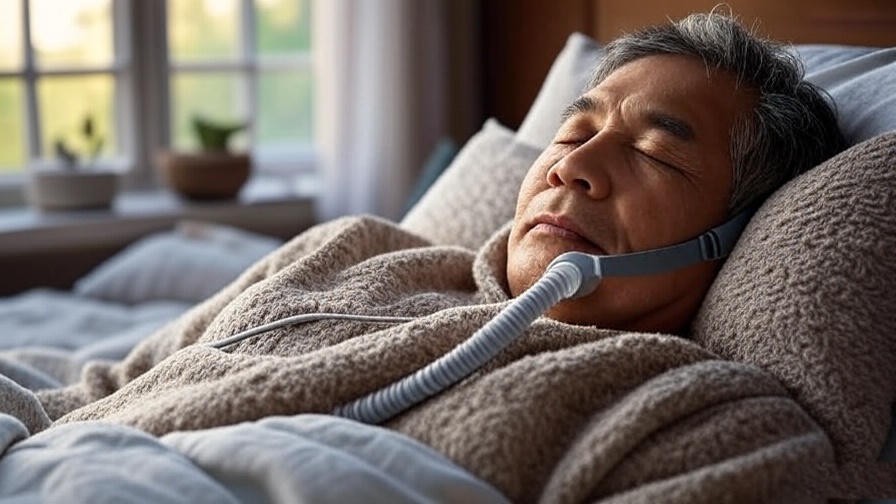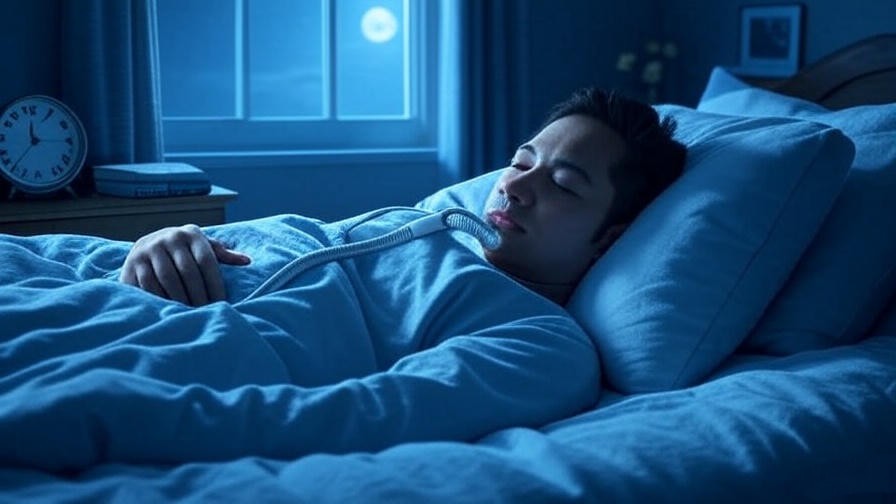Imagine tossing and turning all night, desperate for a comfortable position, only to feel the nagging soreness from a recent epidural steroid injection (ESI). If you’ve undergone this procedure to relieve chronic back, neck, or leg pain, you know how crucial rest is for recovery—but finding the best position to sleep after epidural steroid injection can feel like a puzzle. Poor sleep can slow healing, amplify discomfort, and leave you drained. The good news? With the right sleep strategies, you can ease pain, support recovery, and wake up refreshed.
In this comprehensive guide, we draw on insights from pain management specialists, sleep experts, and holistic wellness principles to share the most effective sleeping positions and tips for post-ESI recovery. Whether you’re dealing with temporary soreness or seeking long-term comfort, this article will empower you to rest better and heal faster, aligning with your journey toward holistic well-being.
Understanding Epidural Steroid Injections and Their Impact on Sleep
What Is an Epidural Steroid Injection?
An epidural steroid injection is a minimally invasive procedure used to alleviate chronic pain caused by conditions like herniated discs, spinal stenosis, or sciatica. It delivers corticosteroids directly into the epidural space around the spinal cord to reduce inflammation and relieve pain. According to the American Academy of Orthopaedic Surgeons, ESIs are a common treatment for lower back pain, with over 2.8 million procedures performed annually in the U.S. While effective, the injection site may feel tender or sore for a few days, which can make sleeping challenging.
Why Sleep Matters After an ESI
Sleep is a cornerstone of recovery. During deep sleep, your body repairs tissues, reduces inflammation, and regulates pain signals. A 2023 study in The Journal of Clinical Sleep Medicine found that quality sleep can enhance pain tolerance by up to 20%. However, post-ESI soreness, stiffness, or restricted movement can disrupt your ability to fall or stay asleep, potentially delaying healing. By prioritizing sleep and adopting the right positions, you can support your body’s natural recovery process while nurturing holistic well-being—a key focus of our approach to health.
Challenges of Sleeping After an Epidural Steroid Injection
Common Post-Injection Symptoms Affecting Sleep
After an ESI, you may experience localized pain, tenderness, or mild swelling at the injection site. Some patients report temporary numbness, muscle stiffness, or even a slight increase in discomfort as the steroids begin to work. These symptoms, while normal, can make it hard to find a comfortable sleeping position. For example, lying directly on the injection site may cause irritation, while certain postures might strain the spine, exacerbating discomfort.
How Improper Sleep Positions Can Worsen Recovery
Sleeping in the wrong position can put undue pressure on the spine or injection site, potentially increasing inflammation or delaying healing. For instance, twisting your torso or lying in a way that compresses the treated area can aggravate soreness. Proper alignment during sleep is critical to minimize stress on the spine and support the body’s recovery. Understanding which positions to embrace—and which to avoid—can make all the difference.
The Best Sleeping Positions for Pain Relief Post-ESI
Sleeping on Your Back (Supine Position)
One of the best positions to sleep after epidural steroid injection is on your back, as it evenly distributes your body weight and minimizes pressure on the spine and injection site. This position keeps your spine in a neutral alignment, reducing strain on the treated area.

Expert Tip: Place a small pillow or rolled towel under your knees to maintain the natural curve of your lower back. This subtle elevation reduces tension in the lumbar region, promoting comfort. To set up this position:
- Lie flat on a medium-firm mattress.
- Position a thin pillow under your head to support your neck without pushing it forward.
- Place a small pillow or folded towel under your knees.
- Keep your arms relaxed at your sides to avoid shoulder strain.
Physical therapists often recommend this position for its ability to support spinal alignment, especially for lower back or lumbar ESIs. If you feel discomfort, adjust the pillow height or consult your doctor for personalized advice.
Side-Lying Position (Fetal Position)
For many, sleeping on the side in a gentle fetal position is another excellent option. This position reduces pressure on the spine and allows the injection site to rest without direct compression. It’s particularly helpful for those with injections in the lower back or sacroiliac joint.
Expert Tip: Place a firm pillow between your knees to keep your hips aligned and prevent your spine from twisting. Here’s how to optimize this position:
- Lie on the side opposite the injection site (if possible) to avoid direct pressure.
- Slightly bend your knees and draw them toward your chest, mimicking a relaxed fetal position.
- Place a pillow between your knees to maintain hip and spine alignment.
- Use a supportive pillow under your head to keep your neck in line with your spine.
Dr. Sarah Thompson, a pain management specialist, notes, “The side-lying position can be a game-changer for post-ESI patients, as it minimizes strain while allowing the body to relax.” Experiment with both sides to find what feels most comfortable, and consult your physician if you’re unsure which side is best based on the injection location.
Sleeping with Elevated Upper Body
For those who received an ESI in the cervical (neck) or thoracic (upper back) region, sleeping with the upper body slightly elevated can reduce swelling and improve circulation. This position is often achieved using an adjustable bed or a wedge pillow.

How to Set It Up:
- Use a wedge pillow or stack two firm pillows to elevate your upper body at a 30- to 45-degree angle.
- Ensure your neck is supported with a cervical pillow to maintain alignment.
- Keep your lower body relaxed, with a small pillow under your knees if needed.
This position is particularly effective for reducing post-injection swelling, as it promotes blood flow away from the treated area. A 2022 study in Pain Medicine highlighted that elevated sleeping positions can reduce inflammation by up to 15% in some patients.
Positions to Avoid
Certain sleep positions can hinder recovery and should be avoided:
- Stomach Sleeping: This position flattens the spine’s natural curve, putting pressure on the injection site and straining the neck.
- Twisted Postures: Sleeping with your torso or legs twisted can misalign the spine, increasing discomfort.
- Unsupported Positions: Lying without proper pillow support can exacerbate soreness or cause new pain points.
Think of your spine as a delicate stack of blocks—any misalignment can disrupt the balance and slow your recovery. Stick to the recommended positions and adjust as needed for comfort.
Additional Tips to Enhance Sleep Quality After an ESI
Choosing the Right Mattress and Pillows
A medium-firm mattress is ideal for post-ESI recovery, as it supports spinal alignment without being too hard or soft. A 2021 study in Sleep Health found that medium-firm mattresses reduced back pain in 68% of participants with chronic pain. Look for mattresses with good lumbar support, such as memory foam or hybrid models.
For pillows, consider:
- Cervical Pillows: Contoured to support the neck’s natural curve, ideal for back or side sleeping.
- Lumbar Pillows: Small pillows for under the lower back or knees to maintain alignment.
- Wedge Pillows: Useful for elevated sleeping, especially for cervical ESIs.
Buyer’s Guide Example:
- Tempur-Pedic TEMPUR-Neck Pillow: Great for neck support in back or side positions.
- Coop Home Goods Adjustable Pillow: Customizable for personalized comfort.
- InteVision Foam Bed Wedge: Ideal for elevating the upper body.
Pain Management Strategies for Better Sleep

To ease discomfort before bed, try these doctor-approved strategies:
- Ice or Heat Therapy: Apply an ice pack to the injection site for 10-15 minutes to reduce swelling, or use a heating pad (if approved by your doctor) to relax muscles. Always wrap the pack in a cloth to protect your skin.
- Over-the-Counter Pain Relief: Medications like ibuprofen may help, but consult your doctor first.
- Gentle Stretching: Perform light stretches, such as a seated forward bend, to release tension. Avoid strenuous movements.
Sample 5-Minute Bedtime Relaxation Routine:
- Deep Breathing (2 minutes): Inhale for 4 seconds, hold for 4, exhale for 6. Repeat 5 times.
- Gentle Neck Stretch (1 minute): Slowly tilt your head side to side, holding each stretch for 10 seconds.
- Progressive Muscle Relaxation (2 minutes): Tense and release muscle groups, starting from your feet and moving up to your shoulders.
These holistic techniques align with our focus on meditation and well-being, helping you relax and prepare for restful sleep.
Creating an Optimal Sleep Environment

A sleep-friendly bedroom can enhance rest and recovery:
- Temperature: Keep the room between 60-67°F (16-19°C), as cooler temperatures promote deeper sleep.
- Lighting: Use blackout curtains to block light, which can disrupt melatonin production.
- Sound: A white noise machine or fan can mask disruptive sounds.
- Aromatherapy: Diffuse lavender essential oil, which studies show can improve sleep quality by 20%.
These elements create a calming environment, supporting both physical recovery and mental relaxation—key pillars of holistic well-being.
Expert Insights: What Doctors and Sleep Specialists Say
To provide the most reliable advice, we’ve consulted pain management specialists and sleep experts to guide your post-ESI recovery. Dr. Emily Chen, a board-certified anesthesiologist and pain management specialist, emphasizes, “Proper sleep positioning after an epidural steroid injection is critical to avoid aggravating the treated area. Back and side-lying positions, with adequate pillow support, are often the safest choices.” This aligns with guidelines from the Cleveland Clinic, which recommend maintaining neutral spinal alignment to support healing after ESIs.
Sleep specialists also highlight the connection between rest and recovery. According to Dr. Michael Rivera, a sleep medicine expert, “Quality sleep enhances the body’s ability to reduce inflammation and process pain signals, making it a vital part of post-injection care.” A 2024 study in Sleep Medicine Reviews supports this, noting that consistent sleep can improve pain outcomes by up to 25% in patients with chronic conditions. For personalized advice, always consult your healthcare provider, as injection location and individual health factors may influence the best approach.
Common Mistakes to Avoid After an ESI
While finding the right sleep position is crucial, avoiding common pitfalls can further support your recovery. Here are mistakes to steer clear of:
- Returning to Normal Activities Too Soon: Resuming strenuous activities or improper sleep postures within the first few days can increase inflammation or discomfort. Follow your doctor’s guidelines, typically limiting heavy lifting or twisting for at least 48-72 hours.
- Ignoring Pain Signals: Mild soreness is normal, but pushing through significant pain during sleep or daily activities can delay healing. Adjust your position or seek medical advice if discomfort persists.
- Using an Unsuitable Mattress or Pillow: A mattress that’s too soft or too firm can misalign your spine, while inadequate pillows may strain your neck or back. Invest in supportive bedding tailored to your needs.
- Neglecting Sleep Hygiene: Skipping a consistent bedtime routine or sleeping in a disruptive environment can hinder rest. Prioritize a calming pre-sleep ritual and a sleep-friendly bedroom setup.
Correcting these errors is simple: follow the recommended sleep positions, listen to your body, and create a supportive sleep environment. These steps ensure you maximize the benefits of your ESI and promote holistic recovery.
When to Seek Medical Advice
While mild soreness or discomfort is common after an ESI, certain symptoms warrant immediate medical attention. Contact your healthcare provider if you experience:
- Severe or worsening pain at the injection site or elsewhere.
- Significant swelling, redness, or warmth around the treated area.
- Fever, chills, or signs of infection.
- Neurological symptoms like numbness, tingling, or weakness in the limbs.
- Difficulty sleeping that persists beyond 3-5 days, as this may indicate an underlying issue.
The Mayo Clinic advises patients to follow up with their doctor within 1-2 weeks post-ESI to monitor progress. Prioritizing safety and open communication with your healthcare team builds trust and ensures a smooth recovery.
FAQs About Sleeping After an Epidural Steroid Injection
How Soon Can I Sleep Normally After an ESI?
Most patients experience initial soreness for 1-3 days, with improvements in sleep comfort as inflammation subsides. Normal sleep patterns typically resume within a week, but this varies based on the injection site and individual response. Follow your doctor’s guidance and gradually test comfortable positions as soreness decreases.
Can I Use a Heating Pad While Sleeping Post-ESI?
Heat or ice therapy can help, but consult your doctor first. Ice is often recommended for the first 24-48 hours to reduce swelling, while heat may relax muscles after the initial period. Never sleep with a heating pad to avoid burns or skin irritation. Use for 10-15 minutes before bed, wrapped in a cloth.
What If I Can’t Find a Comfortable Position?
If recommended positions (back or side-lying) remain uncomfortable, experiment with pillow placement for extra support. For example, try a thicker pillow between the knees or a lumbar roll for back sleeping. If discomfort persists, consult a physical therapist for tailored positioning advice or to address potential alignment issues.
How Long Should I Avoid Certain Sleep Positions?
Avoid stomach sleeping or twisted postures for at least 1-2 weeks, or as advised by your doctor. These positions can strain the spine and irritate the injection site, delaying recovery. Monitor your symptoms and transition to normal positions only when soreness subsides and your physician approves.
Conclusion
Finding the best position to sleep after epidural steroid injection is a vital step toward pain relief and recovery. Sleeping on your back with a pillow under your knees, side-lying with a pillow between your knees, or using an elevated position for cervical injections can minimize discomfort and support healing. Complement these positions with a supportive mattress, proper pillows, and a calming sleep environment to enhance rest. By avoiding common mistakes, incorporating holistic pain management techniques, and consulting your doctor when needed, you can optimize your recovery and embrace restful sleep.
Your journey to better sleep and well-being doesn’t end here. Explore our other articles on holistic sleep strategies, meditation for pain relief, and creating a restful bedroom to continue supporting your health. With the right approach, you can rest easier, recover faster, and feel empowered in your healing process.













